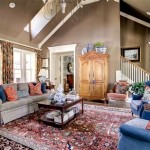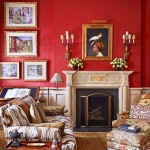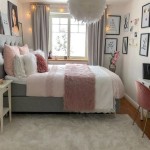Neutral Kitchen Decor Ideas for Living Room
Open-plan living spaces have become increasingly popular, blurring the lines between the kitchen and living room. This integrated design requires a cohesive aesthetic that flows seamlessly between the two areas. Neutral decor offers a versatile and timeless solution, creating a sense of spaciousness and allowing for easy customization with accent pieces and pops of color.
A neutral palette doesn't equate to a bland space. It encompasses a range of hues, including shades of white, beige, gray, taupe, and even black. These colors serve as a foundation, creating a calming and sophisticated atmosphere while allowing other elements like furniture, textures, and artwork to take center stage. The key is to create visual interest through layering and contrasting textures.
One of the most effective ways to introduce neutrality in a combined kitchen and living area is through consistent flooring. Opting for a uniform flooring material, such as hardwood, laminate, or large-format tiles, creates a visual connection between the two spaces. This contributes to a sense of continuity and makes the area appear larger. Consider continuing the same flooring throughout the entire open-plan area to maximize this effect.
Cabinetry plays a significant role in both the kitchen and living room's overall aesthetic. In the kitchen, neutral-colored cabinets, such as white, cream, or gray, provide a timeless and adaptable backdrop. These can be complemented by natural wood tones for open shelving or a kitchen island, adding warmth and visual interest. In the living room, built-in shelves or entertainment units in matching neutral tones can create a cohesive and streamlined look.
Countertops offer another opportunity to incorporate neutral elements. Materials like quartz, granite, or marble in shades of white, gray, or beige provide a clean and sophisticated look. Consider contrasting textures, such as a honed finish for the countertop and polished finish for the backsplash, to create subtle visual interest. Wooden countertops can also be incorporated for a warmer, more rustic feel, especially when paired with lighter-toned cabinets.
Wall color significantly impacts the overall ambiance. Opting for lighter neutral shades like off-white, light gray, or beige helps to reflect light and create a sense of airiness. These colors also serve as an excellent backdrop for artwork and decorative accessories. Consider a slightly darker neutral shade for an accent wall to add depth and visual interest without overwhelming the space.
Furniture choices play a vital role in unifying the kitchen and living room. Selecting sofas, armchairs, and dining chairs in neutral fabrics like linen, cotton, or leather creates a harmonious and inviting atmosphere. These neutral pieces can be accented with colorful throws, cushions, and rugs to introduce personality and warmth. Consider incorporating natural materials like wood and rattan for coffee tables, side tables, and dining tables to add texture and warmth.
Lighting is crucial in establishing the mood and functionality of the combined space. Recessed lighting provides overall illumination, while pendant lights above the kitchen island and floor lamps in the living room create focal points and add a touch of style. Consider using warm-toned light bulbs to create a cozy and inviting atmosphere. Dimmers allow for adjustable lighting to suit different activities and times of day.
Textiles contribute significantly to the overall aesthetic and comfort of the space. Neutral-colored rugs, curtains, and throws in textures like wool, linen, and cotton create a sense of warmth and coziness. Layering different textures adds depth and visual interest. Consider incorporating patterned textiles in neutral colors for subtle visual stimulation without disrupting the overall calming effect.
Accessories and artwork provide opportunities to personalize the space and inject pops of color. Decorative items like vases, bowls, and sculptures in neutral tones or natural materials can add subtle visual interest. Artwork can be used to introduce color, pattern, and personality. Consider using a gallery wall to showcase a collection of prints or photographs.
Bringing elements of nature into the space can enhance the neutral palette and create a calming and refreshing environment. Incorporate indoor plants of varying sizes and textures to add life and vibrancy. Natural materials like wood, stone, and rattan can be used in furniture and accessories to further connect the space to the outdoors.
Metal accents can be strategically used to add a touch of elegance and sophistication. Consider incorporating brass, copper, or black metal in light fixtures, cabinet hardware, and decorative accessories. These metallic elements can create contrast and visual interest against the neutral backdrop.
Maintaining a consistent style throughout the open-plan space is key to creating a cohesive and harmonious look. Whether it's modern, minimalist, farmhouse, or traditional, ensure that the chosen style is reflected in both the kitchen and living room through furniture choices, color palettes, and decorative elements. This creates a sense of flow and unity between the two areas.

Neutral Living Room Design Ideas One Coast Interior

35 Neutral Living Room Ideas That Are Anything But Plain

Beautiful Neutral Open Concept Living Room And Kitchen Design House Seven Livin Modern Farmhouse Farm

50 Best Small Kitchen Ideas Layout Photos

6 Ways To Spice Up Your Neutral Kitchen

Can You Mix Grey And Beige E Design Lighting Plan

Decor Ideas For An Open Floor Plan Living Room And Kitchen

Harmonious Design Open Concept Living Room And Kitchen Ideas Decorilla Interior
:max_bytes(150000):strip_icc()/MichelleBoudreau8926Revision-4318x2880x368x0x3840x2880x1664884559-2756c4d88fc948f29b52ac17580b1912.jpg?strip=all)
28 Open Kitchen Living Room Ideas To Create A Cohesive Space

60 Beautiful White Kitchen Ideas With Timeless Style







